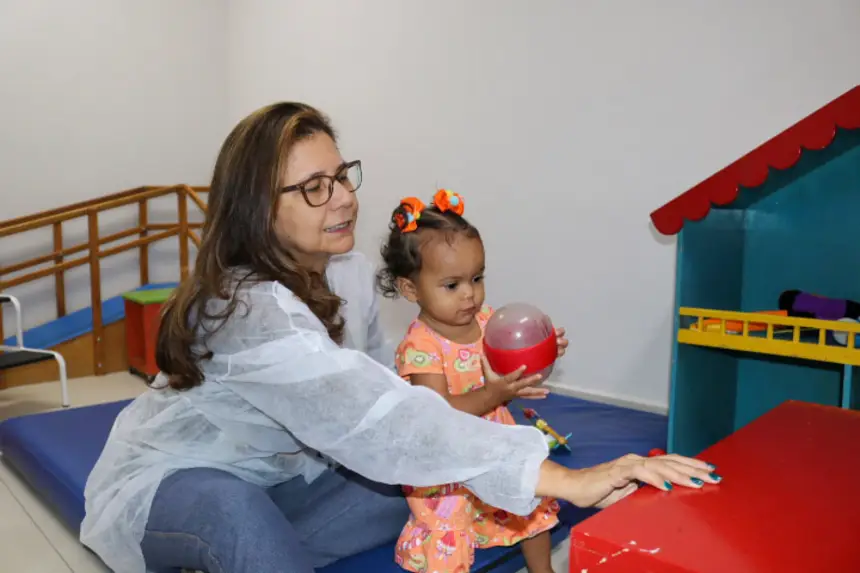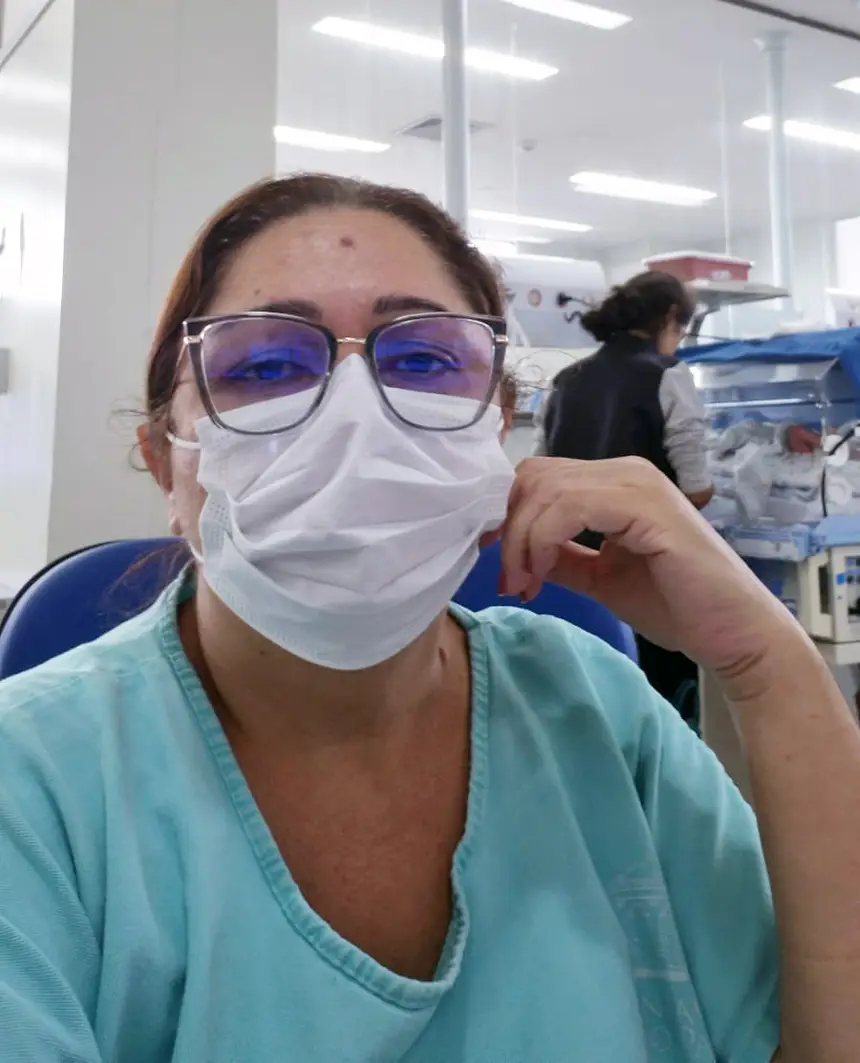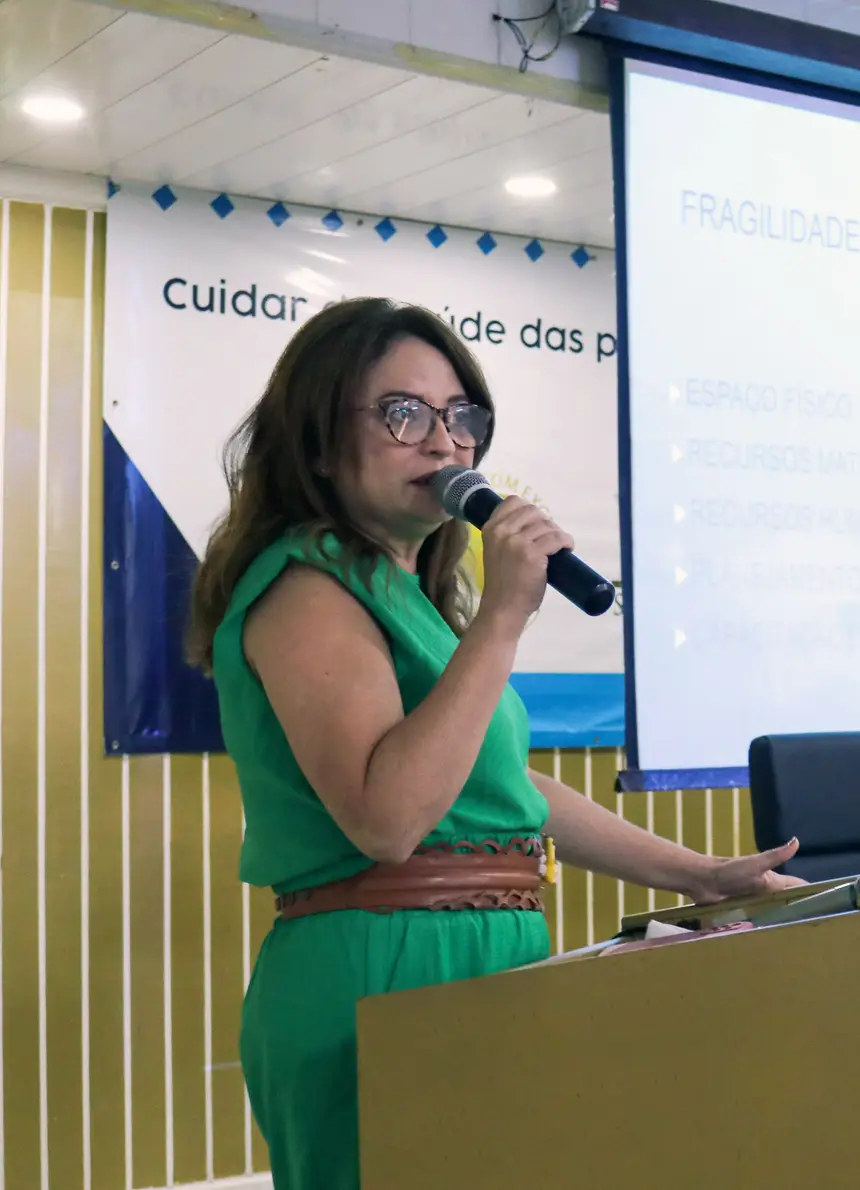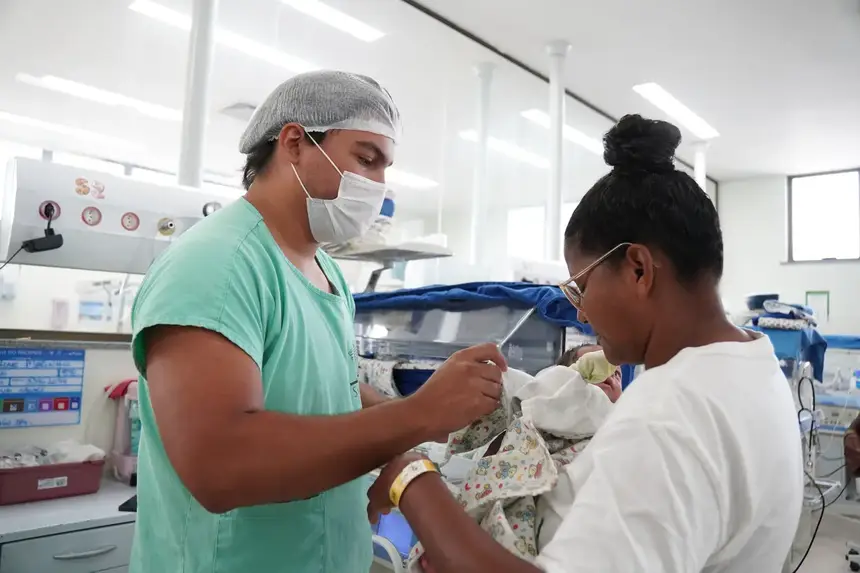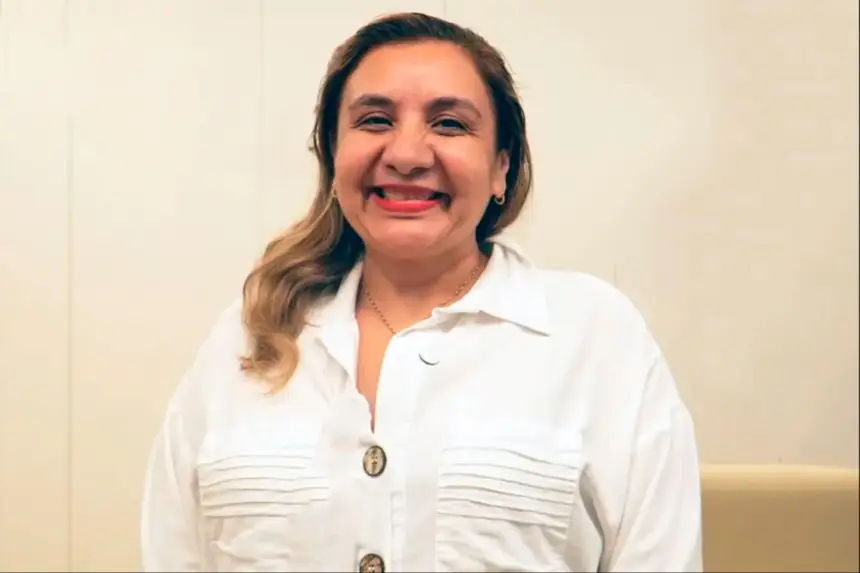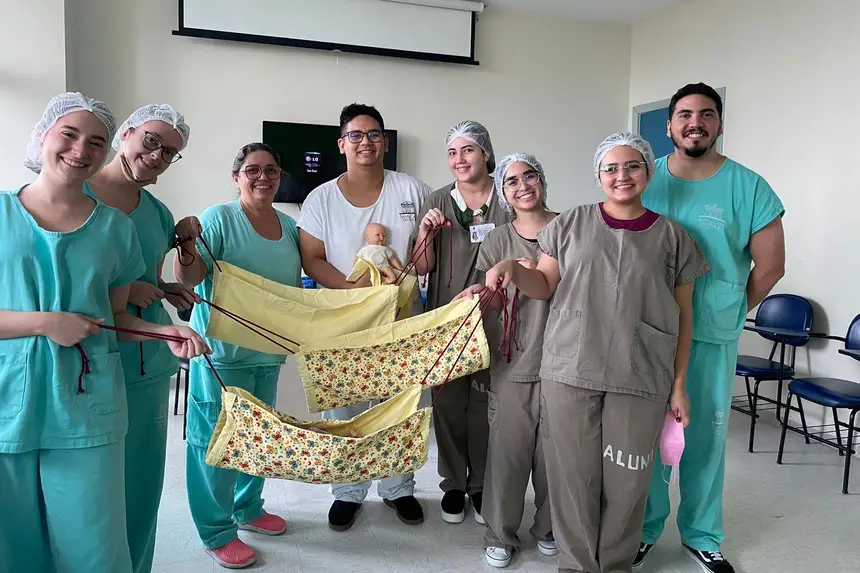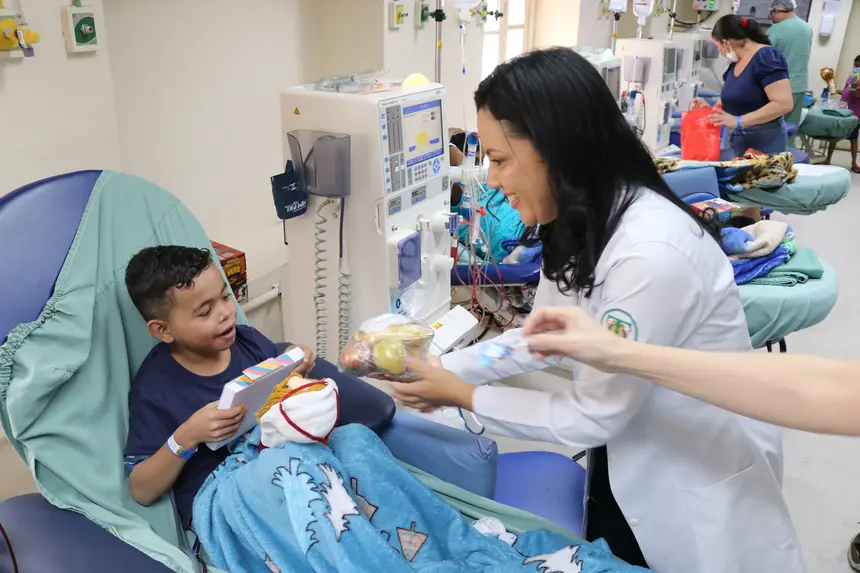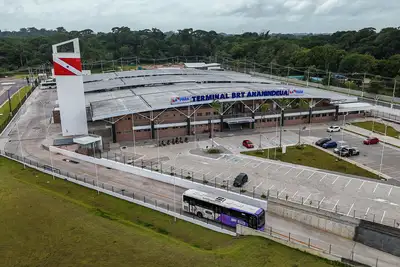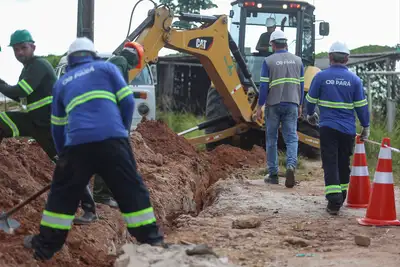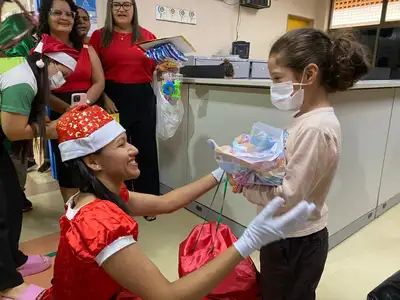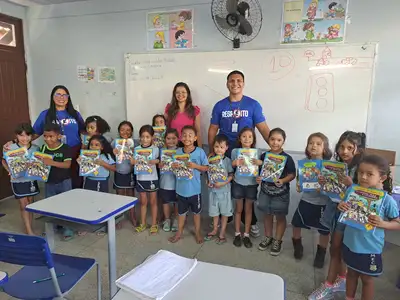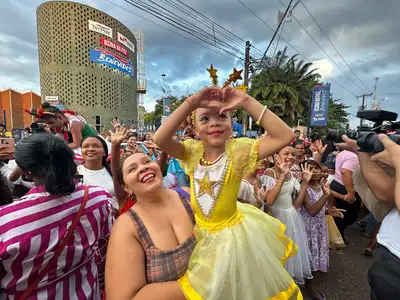Physical Therapies and Occupational Therapies Strengthen Multidisciplinary Care at Santa Casa
Professional actions are indispensable in hospital care
Patients admitted to the Intensive Care Units (ICUs) of the Santa Casa de Misericórdia do Pará Foundation (FSCMPA) benefit from specialized multiprofessional teams, a significant advancement in treatment, which includes physiotherapists and occupational therapists. According to intensivist physician Nelma Machado, critically ill patients require multiple care from different areas of health, and the associated work improves prognoses and accelerates the discharge of hospitalized patients.
“We create individualized assistance groups every day, at the bedside. It is the reference team alongside the patient so that we can double this care for the patient, and in this individualized approach, we provide the care. The care is a routine that seeks the greater interest of each patient,” the doctor reports.
This patient care reference has the recognition of the physiotherapist's work at Santa Casa, says Aureni de Araújo. “Santa Casa, being a hospital focused on teaching and assistance, has enabled continued education in service, favoring the qualification of physiotherapist staff.”
“Thus, physiotherapy is integrated into the hospital environment across various clinics with attention directed to medium and high complexity. Assisting patients from admission to discharge with evidence-based procedures focused on patient safety, in addition to promoting a humanized stay for the patient during hospitalization,” highlights Aureni.
Ester Miranda, occupational therapist at the Santa Casa Foundation, informs that besides integrating the multiprofessional team, the occupational therapist enables the promotion of quality of life and autonomy of the individual at different life stages. “In occupations such as activities of daily living, education, work, play, and social participation, through motor, sensory, cognitive, playful stimuli, adaptations, and environmental strategies, in addition to contributing to the adherence of the patient and their family to treatment.”
Reinaldo da Silva Ferreira, a physiotherapist who manages the Biopsychosocial Center of the Santa Casa Foundation, reports that over the past few years, the presence of physiotherapists in the hospital environment has expanded, keeping pace with technological and scientific advancements in the health field.
“Modern equipment, such as mechanical ventilators and respiratory monitoring devices, and techniques such as non-invasive ventilation and early mobilization, allow for more effective intervention, resulting in faster recovery and reduced patient hospitalization time,” says Reinaldo.
Fernanda Lobato, an occupational therapist working in the pediatric renal area of Santa Casa, states that the therapist's work in the hospital environment facilitates the reception and adaptation of the child to their treatment process, especially related to chronic illness, where this treatment will be long-term. “Every change that occurs in the life routine of the child and the family needs to be incorporated because they will now need to adapt to a hospital routine as well.”
“The therapist, through the therapeutic bond, through the peculiar approaches of childhood, which are playful, expressive, and engaging, facilitates this contact of the child with this new environment to help them face the treatment process, which is often quite rigid and painful, and also contributes to their completion,” affirms Fernanda Lobato.
Elineth Valente, a physiotherapist who coordinates the Ambulatory Complex of the Santa Casa Foundation, reinforces that physiotherapy and occupational therapy have consolidated, especially in the last decade, as professions of utmost importance for comprehensive health care for the population.
“One of the most impactful aspects of the SUS is universality, equity, and the guarantee of quality assistance, and these two professionals are essential for the population to receive this type of care. We have grown and advanced in various aspects. Physiotherapy has expanded in areas of practice and specialties, broadening its scope of assistance and insertion.”
Elineth also informs that occupational therapy has gained surprising visibility in recent years, especially due to the high demand it has had, particularly concerning the autism spectrum. “But not only for that reason, because society has realized that this professional is capable of restoring quality of life and functionality. So, these are two categories in full evolution that must certainly be viewed this way by the entire health system, whether public or private.”
For physiotherapist Aureni de Araújo, the guarantee of success is undoubtedly based on continuous improvement and ethics. “It is what generates a qualified professional who is adequately prepared to be safely integrated into various hospital and outpatient scenarios. And the important thing is to have knowledge, skills, and competencies based on ethics and focused on humanization in assistance.”
Reference - Last Monday (13), the National Day of the Physiotherapist and Occupational Therapist was celebrated; the date was chosen to represent the day of the creation of the two professions. In January 2015, Law No. 13,084 was enacted, which officially established the celebration of the date throughout the national territory. Currently, the Santa Casa Foundation has a workforce of 78 Physiotherapists and 14 Occupational Therapists.


